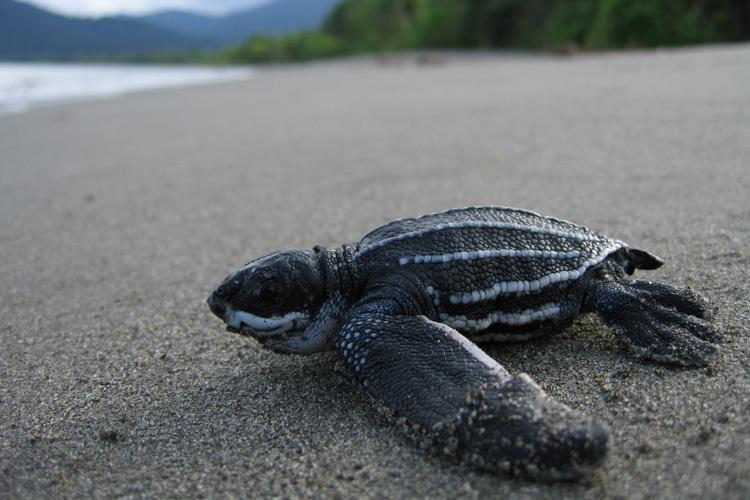Leatherback turtles are some of the most fascinating creatures in the ocean. Not only are they the largest turtle species in the world, but they are also among the largest reptiles on Earth. In this article, we will explore just how big these impressive creatures can get.

Credit: en.wikipedia.org
General Information
The scientific name for the leatherback turtle is Dermochelys coriacea, and they are known for their unique shell structure. Unlike other turtles with hard shells, leatherbacks have a soft, rubbery skin covered in oily flesh, which gives them their leathery appearance and name.
Size and Weight
Leatherback turtles are known to reach impressive sizes. On average, these turtles measure between 5 to 7 feet in length and weigh anywhere between 550 to 1,500 pounds. However, records show that some individuals have been measured at a whopping 10 feet in length and weighing over 2,000 pounds.
Their size can vary depending on various factors, including their age, gender, and access to suitable food sources. It is worth noting that female leatherbacks tend to be larger than males, with some adult females weighing over 1,800 pounds.

Credit: www.reddit.com
Comparison to Other Turtle Species
Comparing the size of leatherback turtles to other turtle species further emphasizes their massive proportions. While the average leatherback weighs around 1,000 pounds, the average green sea turtle weighs only 350 pounds, and the average loggerhead turtle weighs about 250 pounds.
Due to their size, leatherbacks also have the ability to dive to greater depths than other turtle species. They can reach depths of up to 4,000 feet while searching for their primary source of food – jellyfish.
Growth Rate and Lifespan
Leatherback turtles grow at a relatively slow rate compared to some other marine animals. It takes them approximately 10 to 15 years to reach sexual maturity, at which point they can start reproducing. They continue to grow throughout their lives, with growth rates varying between individuals.
As for their lifespan, leatherback turtles have been known to live for several decades. While no precise figure can be given, scientists estimate that they can live up to 40 to 60 years. However, due to the various threats they face, such as pollution, climate change, and human activities, their lifespans are often cut short.
Conservation Status
Although leatherback turtles are one of the largest and most enduring species on the planet, they are also considered endangered. The International Union for Conservation of Nature (IUCN) lists them as vulnerable, highlighting the need for conservation efforts.
One of the main reasons for the decline in leatherback populations is human interference. Overfishing, pollution, habitat destruction, and egg poaching all contribute to the decline of these incredible creatures. Efforts are now being made to protect nesting beaches, regulate fishing practices, and reduce plastic pollution to safeguard the future of leatherback turtles.
Conclusion
Leatherback turtles are truly remarkable creatures that can reach impressive sizes. From their unique shell structure to their enormous weight, they captivate us with their sheer size. However, their immense proportions also make them vulnerable to various threats.
Preserving the habitat and protecting leatherback turtles is crucial to ensure their survival. By raising awareness about their magnificence and implementing effective conservation measures, we can help safeguard these gentle giants for generations to come.






Leave a Reply